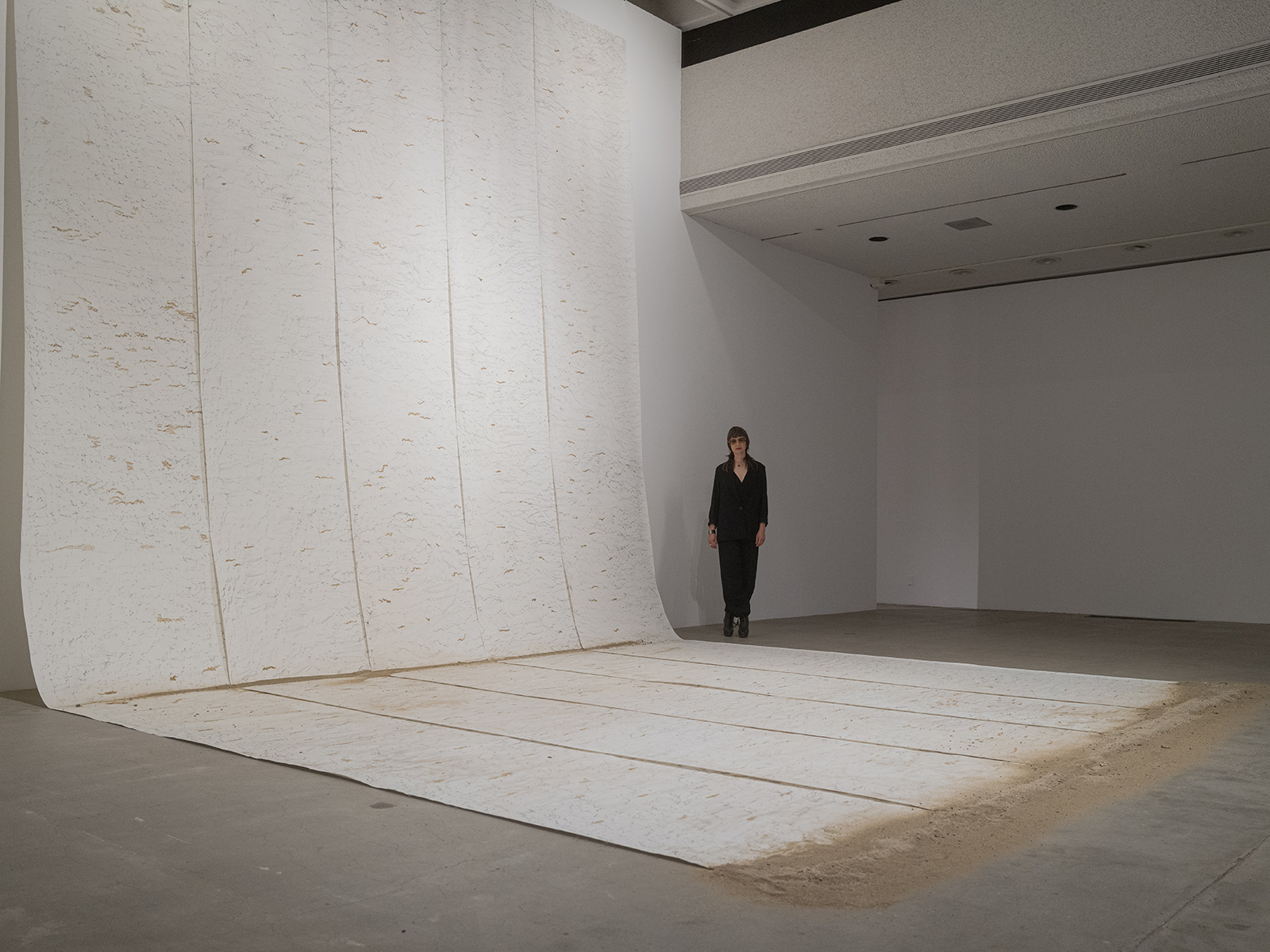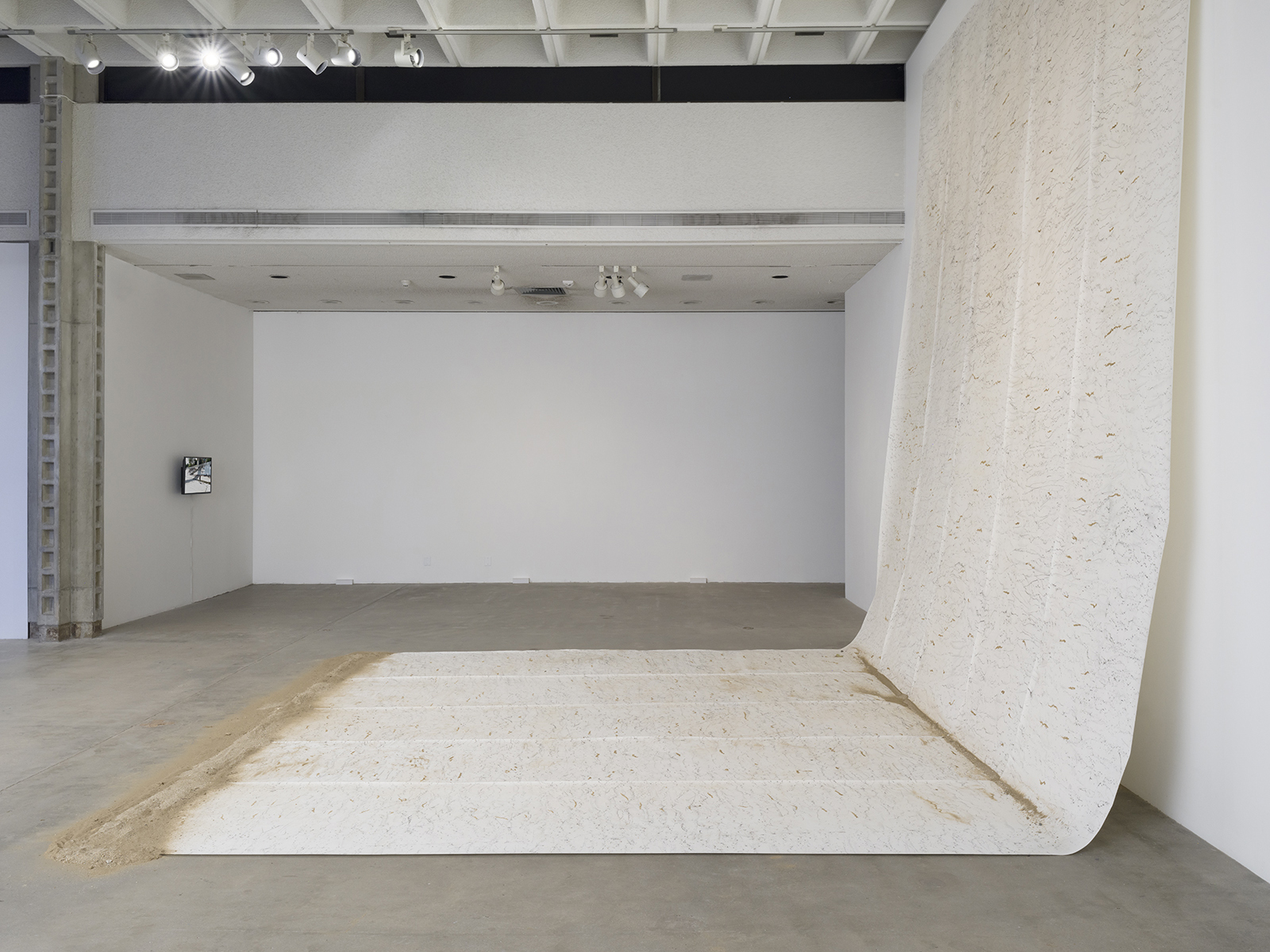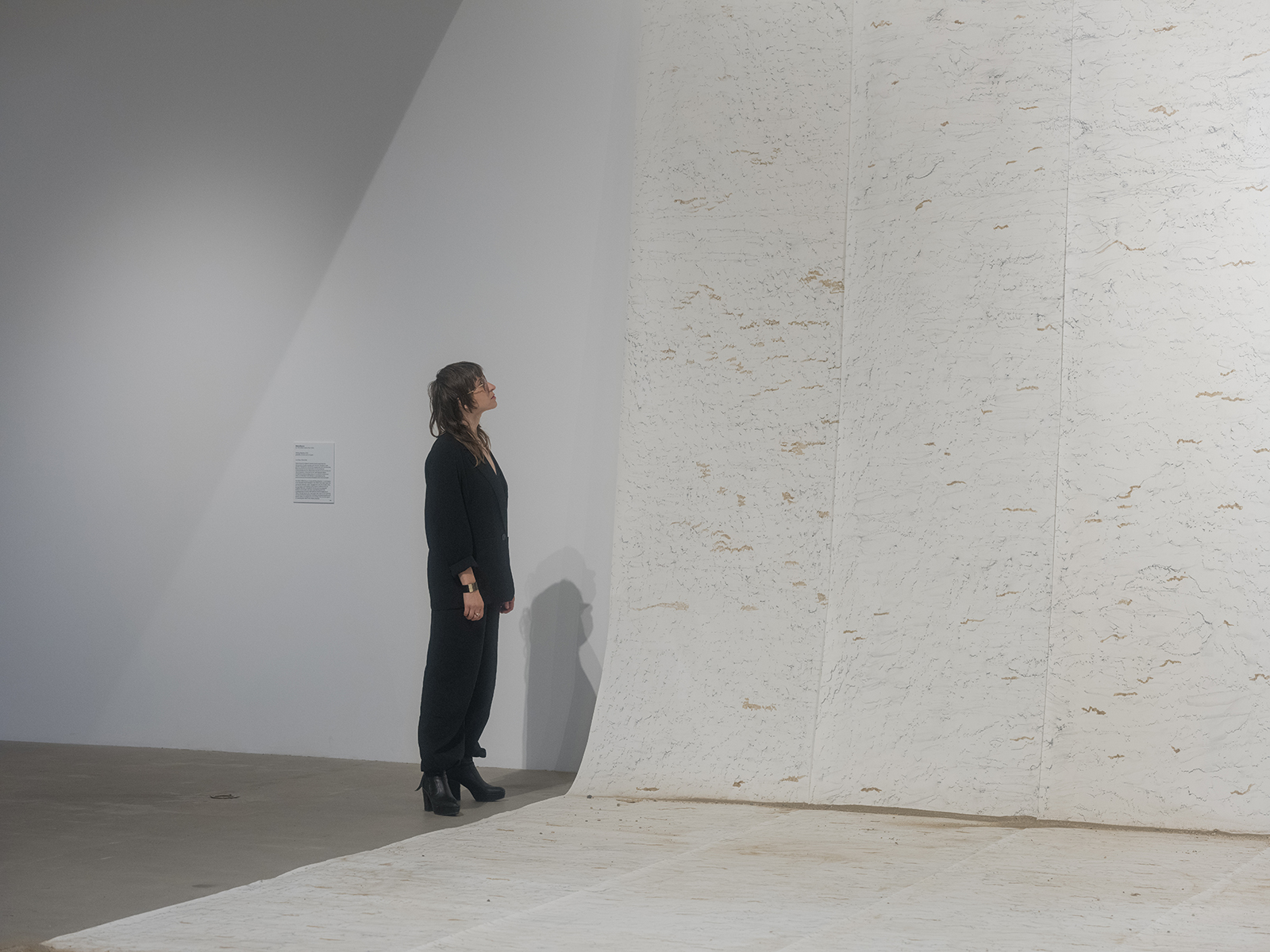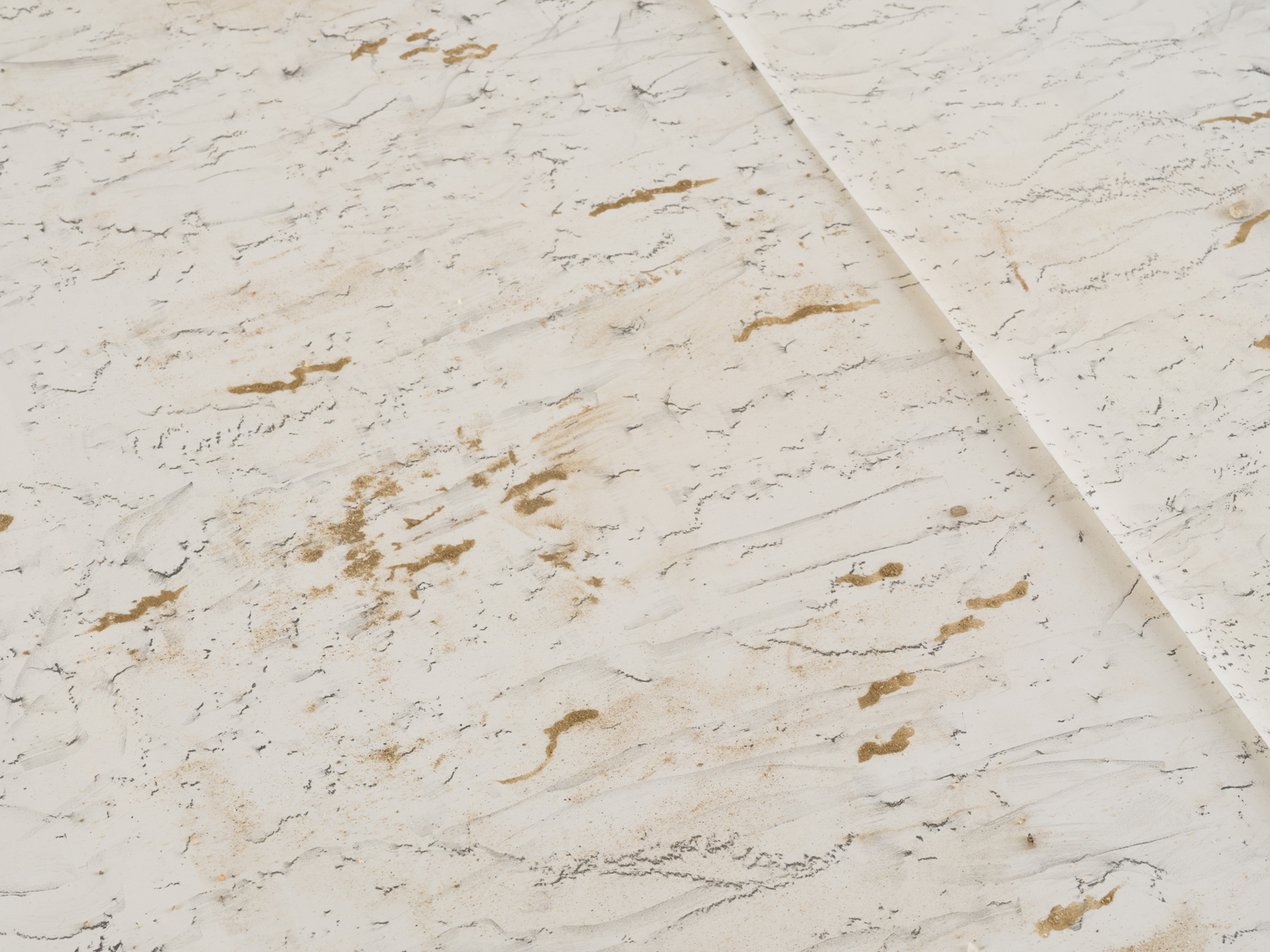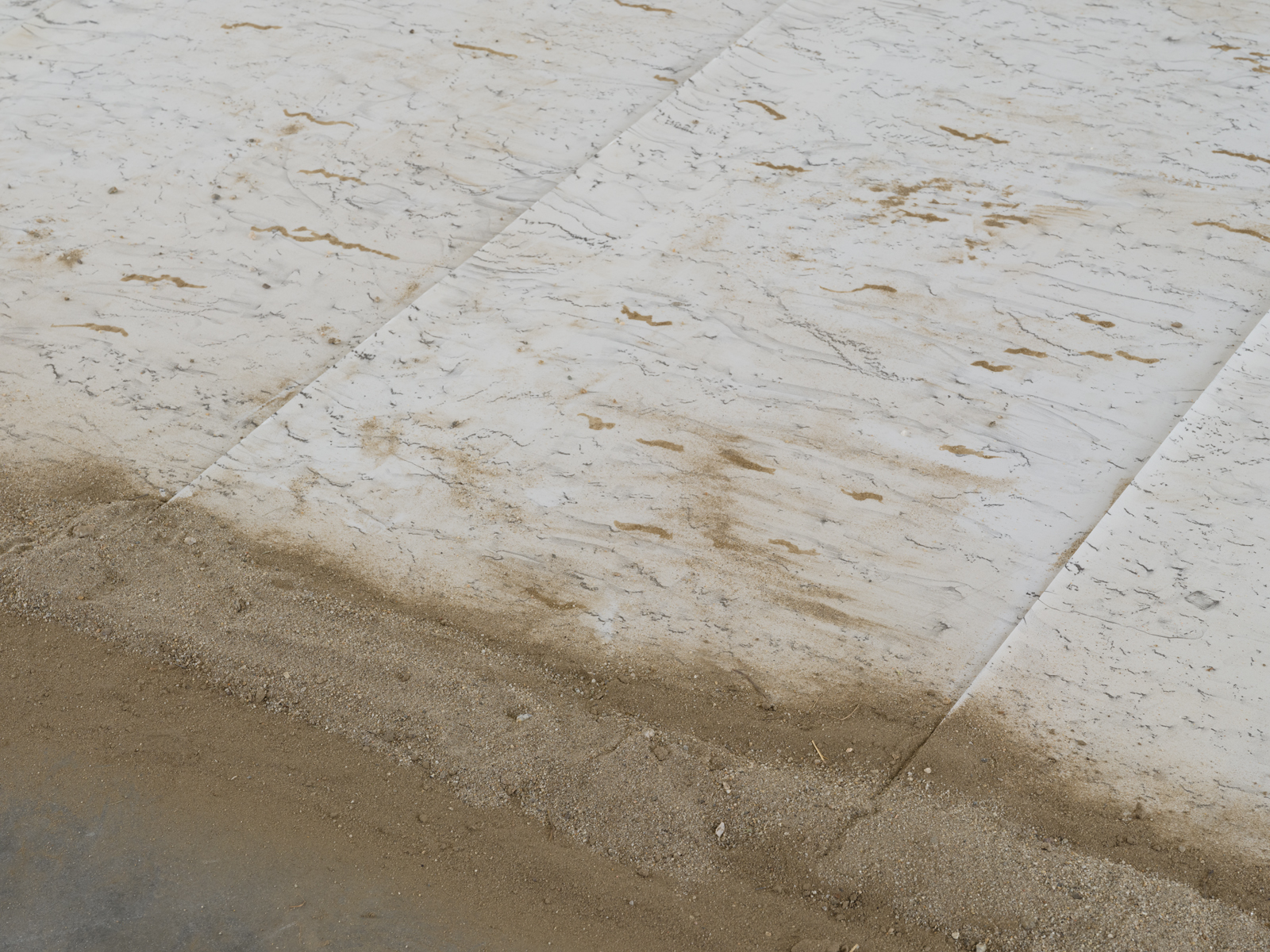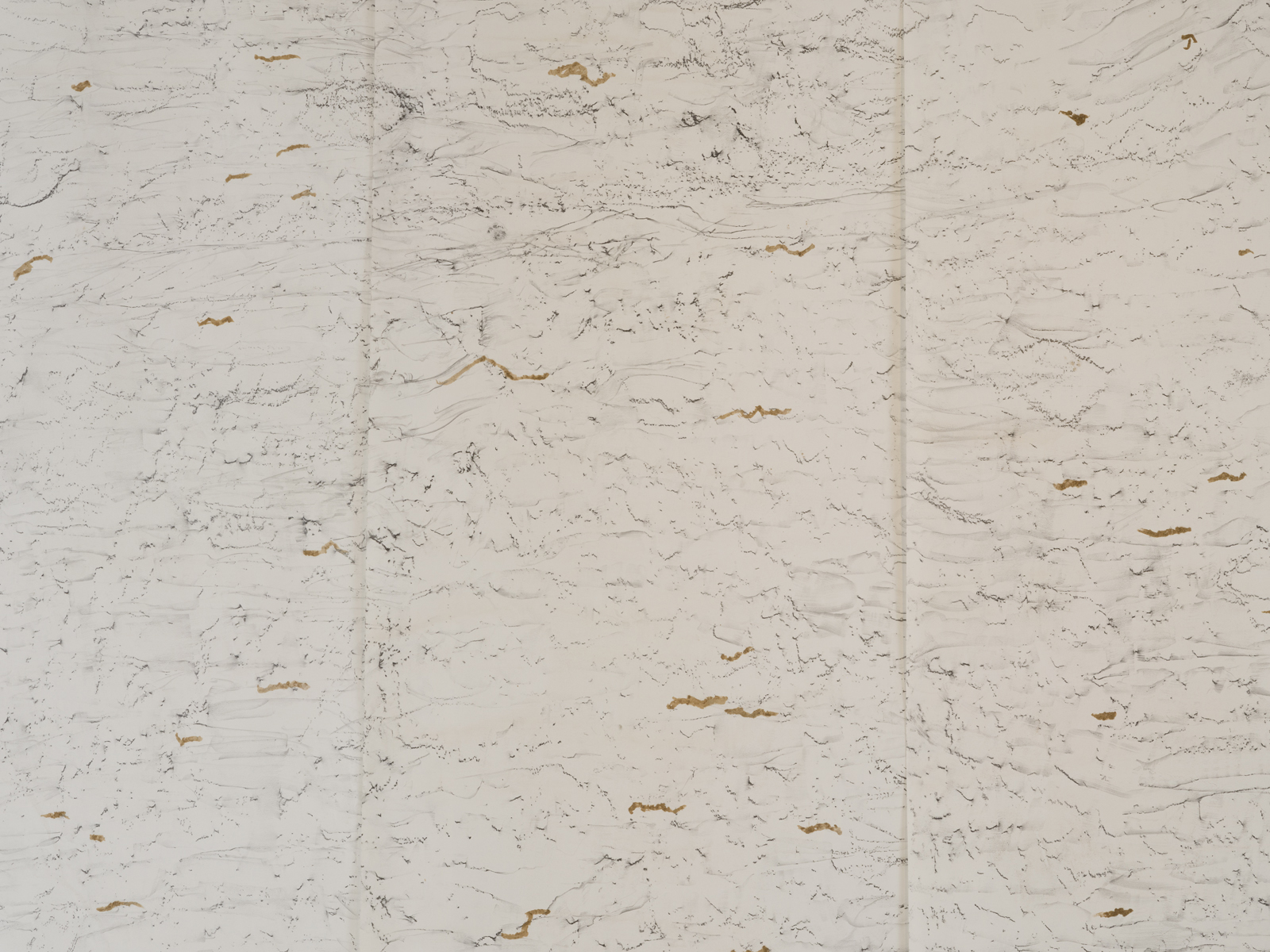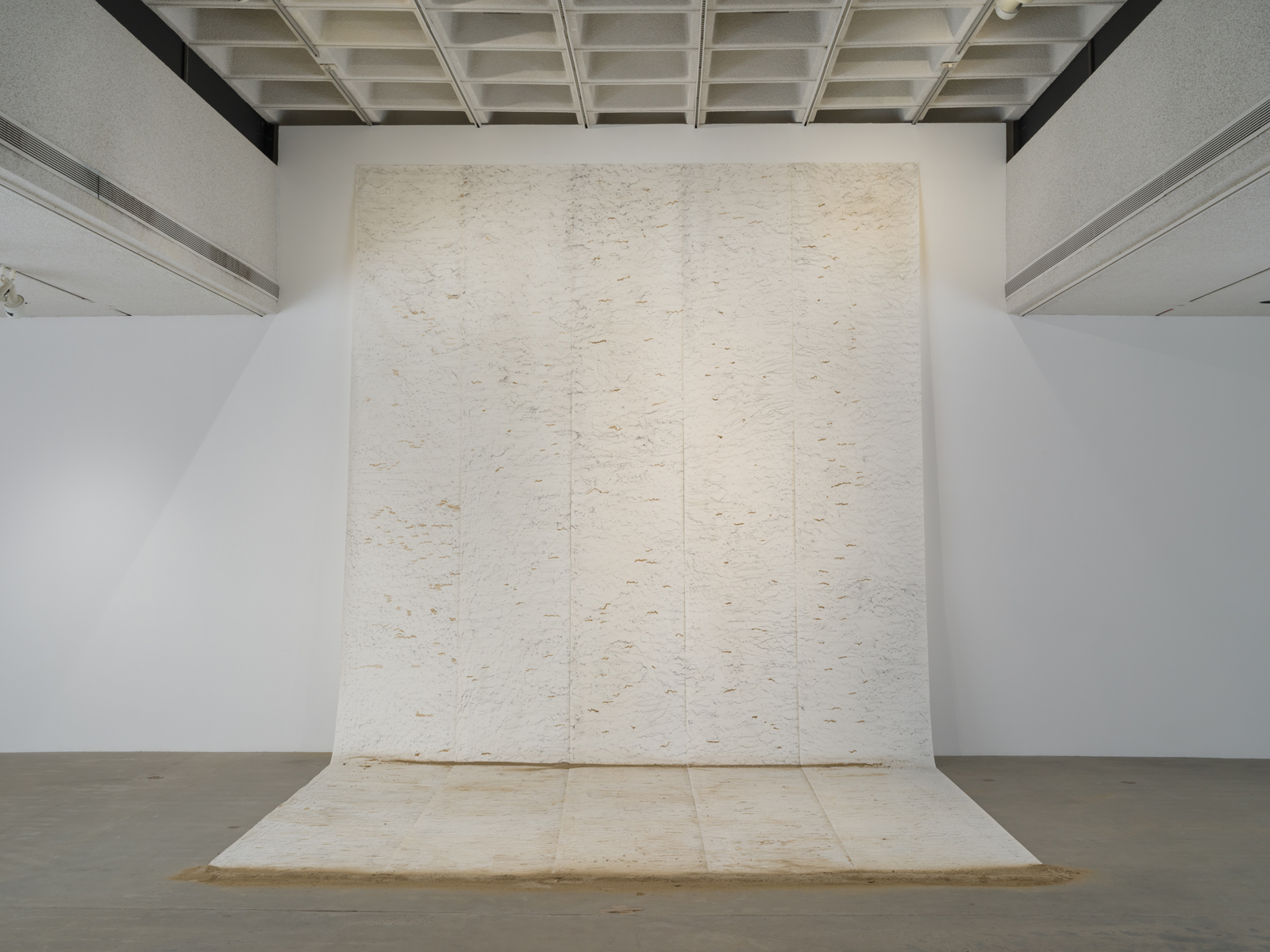
Shifting Baseline
—
COLA IMAP at Los Angeles
Municipal Art Gallery
Shifting Baseline
—
COLA IMAP at Los Angeles
Municipal Art Gallery
Shifting Baseline
—
COLA IMAP at Los Angeles
Municipal Art Gallery
Commissioned by the City of Los Angeles as part of City of Los Angeles Independent Master Artist Project (COLA IMAP) at Los Angeles Municipal Art Gallery.
"Shifting baselines are the chronic, slow, hard-to-notice changes in things, from the disappearance of birds and frogs in the countryside to the increased drive time from L.A. to San Diego. Among environmentalists, a baseline is an important reference point for measuring the health of ecosystems. It provides information against which to evaluate change. It's how things used to be… If we know the baseline for a degraded ecosystem, we can work to restore it. But if the baseline shifted before we really had a chance to chart it, then we can end up accepting a degraded state as normal – or even as an improvement."
— Randy Olson, LA Times
Experimenting with mark making through a frottage technique, Shifting Baseline (2024) expands cartographic representation through process and location as defined by water. The monumental drawing, 30 feet long and 17 feet wide, was made from the surfaces of two geographies, one synthetic (the Los Angeles River Flood Control basin) and one natural (Clark Dry Lake). This room size work on paper spills from the wall to the floor, honoring the fact that we are all connected by water. Graphite rubbed onto sequential rolls of paper spanned the manufactured Los Angeles riverbed. Sand from Clark Dry Lake (Sonoran Desert) is overlaid onto the graphite, creating a graphic score of the two California sites.
Click on images below to view full screen.
Commissioned by the City of Los Angeles as part of City of Los Angeles Independent Master Artist Project (COLA IMAP) at Los Angeles Municipal Art Gallery.
"Shifting baselines are the chronic, slow, hard-to-notice changes in things, from the disappearance of birds and frogs in the countryside to the increased drive time from L.A. to San Diego. Among environmentalists, a baseline is an important reference point for measuring the health of ecosystems. It provides information against which to evaluate change. It's how things used to be… If we know the baseline for a degraded ecosystem, we can work to restore it. But if the baseline shifted before we really had a chance to chart it, then we can end up accepting a degraded state as normal – or even as an improvement."
— Randy Olson, LA Times
Experimenting with mark making through a frottage technique, Shifting Baseline (2024) expands cartographic representation through process and location as defined by water. The monumental drawing, 30 feet long and 17 feet wide, was made from the surfaces of two geographies, one synthetic (the Los Angeles River Flood Control basin) and one natural (Clark Dry Lake). This room size work on paper spills from the wall to the floor, honoring the fact that we are all connected by water. Graphite rubbed onto sequential rolls of paper spanned the manufactured Los Angeles riverbed. Sand from Clark Dry Lake (Sonoran Desert) is overlaid onto the graphite, creating a graphic score of the two California sites.
Click on images below to view full screen.
Commissioned by the City of Los Angeles as part of City of Los Angeles Independent Master Artist Project (COLA IMAP) at Los Angeles Municipal Art Gallery.
"Shifting baselines are the chronic, slow, hard-to-notice changes in things, from the disappearance of birds and frogs in the countryside to the increased drive time from L.A. to San Diego. Among environmentalists, a baseline is an important reference point for measuring the health of ecosystems. It provides information against which to evaluate change. It's how things used to be… If we know the baseline for a degraded ecosystem, we can work to restore it. But if the baseline shifted before we really had a chance to chart it, then we can end up accepting a degraded state as normal – or even as an improvement."
— Randy Olson, LA Times
Experimenting with mark making through a frottage technique, Shifting Baseline (2024) expands cartographic representation through process and location as defined by water. The monumental drawing, 30 feet long and 17 feet wide, was made from the surfaces of two geographies, one synthetic (the Los Angeles River Flood Control basin) and one natural (Clark Dry Lake). This room size work on paper spills from the wall to the floor, honoring the fact that we are all connected by water. Graphite rubbed onto sequential rolls of paper spanned the manufactured Los Angeles riverbed. Sand from Clark Dry Lake (Sonoran Desert) is overlaid onto the graphite, creating a graphic score of the two California sites.
Click on images below to view full screen.
Commissioned by the City of Los Angeles as part of City of Los Angeles Independent Master Artist Project (COLA IMAP) at Los Angeles Municipal Art Gallery.
"Shifting baselines are the chronic, slow, hard-to-notice changes in things, from the disappearance of birds and frogs in the countryside to the increased drive time from L.A. to San Diego. Among environmentalists, a baseline is an important reference point for measuring the health of ecosystems. It provides information against which to evaluate change. It's how things used to be… If we know the baseline for a degraded ecosystem, we can work to restore it. But if the baseline shifted before we really had a chance to chart it, then we can end up accepting a degraded state as normal – or even as an improvement."
— Randy Olson, LA Times
Experimenting with mark making through a frottage technique, Shifting Baseline (2024) expands cartographic representation through process and location as defined by water. The monumental drawing, 30 feet long and 17 feet wide, was made from the surfaces of two geographies, one synthetic (the Los Angeles River Flood Control basin) and one natural (Clark Dry Lake). This room size work on paper spills from the wall to the floor, honoring the fact that we are all connected by water. Graphite rubbed onto sequential rolls of paper spanned the manufactured Los Angeles riverbed. Sand from Clark Dry Lake (Sonoran Desert) is overlaid onto the graphite, creating a graphic score of the two California sites.
Click on images below to view full screen.
Commissioned by the City of Los Angeles as part of City of Los Angeles Independent Master Artist Project (COLA IMAP) at Los Angeles Municipal Art Gallery.
"Shifting baselines are the chronic, slow, hard-to-notice changes in things, from the disappearance of birds and frogs in the countryside to the increased drive time from L.A. to San Diego. Among environmentalists, a baseline is an important reference point for measuring the health of ecosystems. It provides information against which to evaluate change. It's how things used to be… If we know the baseline for a degraded ecosystem, we can work to restore it. But if the baseline shifted before we really had a chance to chart it, then we can end up accepting a degraded state as normal – or even as an improvement."
— Randy Olson, LA Times
Experimenting with mark making through a frottage technique, Shifting Baseline (2024) expands cartographic representation through process and location as defined by water. The monumental drawing, 30 feet long and 17 feet wide, was made from the surfaces of two geographies, one synthetic (the Los Angeles River Flood Control basin) and one natural (Clark Dry Lake). This room size work on paper spills from the wall to the floor, honoring the fact that we are all connected by water. Graphite rubbed onto sequential rolls of paper spanned the manufactured Los Angeles riverbed. Sand from Clark Dry Lake (Sonoran Desert) is overlaid onto the graphite, creating a graphic score of the two California sites.
Click on images below to view full screen.
